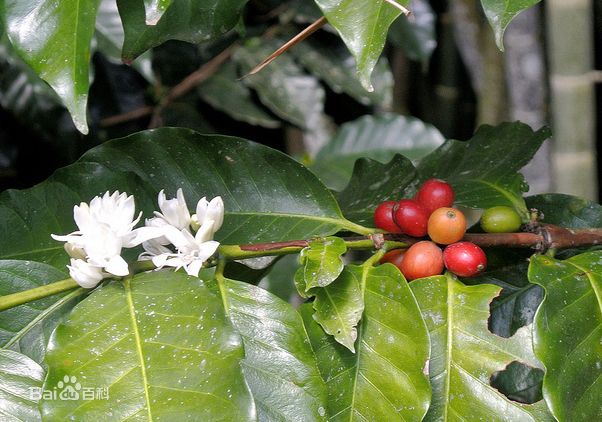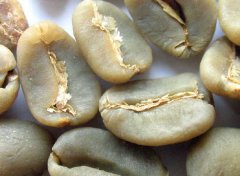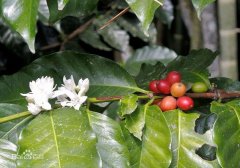What is the defective flavor? what is the defective flavor?
Boiled beef
Odor Type: Roasted, Animal
Odor characteristics: this is cooked beef and roast poultry skin that rich and appetizing smell. 2-2-Methyl-3-furanethiol tastes like boiled beef.
Boiled beef in coffee: This delicate, sulfur-like aroma is worthy of the best Arabica. It blends perfectly with cocoa.
Coffee Tasting: "This is one of the highly appreciated aromas of some of the world's finest coffees. It has an important influence on the aroma of Costa Rican premium coffee and blends well with the botanical aromas in Victory coffee in Guatemala. In Colombia coffee, it is strongest in the Serrania de Perija region's Excelsos, while it is rare in Brazilian coffee. You can also find it in African coffee, especially in the ground, dried aroma. It's subtle in Ethiopian coffee, but noticeable in the best Kenyan coffee."
32 smoke
Odor Type: Roasted
Odor characteristics: This odor has obvious volatility, which is released by several kinds of wood and resin when burning. This pleasant smell adds flavor to smoky foods. Among them, phenol (phenol) is an indispensable component of smoke.
Smoke in coffee: Smoke usually indicates the final stage of roasting, and if it continues, it will appear burnt.
Coffee Tasting: "You can find multiple flavors in coffee, and it can actually be called an odor category alone." No matter where the coffee comes from, you will smell smoke. In Central and South America, the most smoky coffees come from Colombia, Honduras, Pacamara in El Salvador, and Victory in Guatemala. It differs from Brazilian Bahias coffee. Smoke is more or less intensified in the Blue Mountains of Jamaica, depending on the baker. In Africa, you'll find it in Zaire's Kiwu, which is also one of the main odor compounds in the best Ugandan coffee."
36 rubber flavor rubber
Odor Type: Chemical
Odor characteristics: People can distinguish rubber by its unique smell, a natural elastic substance. It comes from latex and is usually collected from Hevea brasiliensis by cutting the trunk, squeezing the leaves, or by spontaneous efflux. Virgin rubber has many uses, but after heat processing and adding sulfides, it has a wider range of uses. 3-Ethyl 3-propionate produces this odor and is present in coffee.
"Rubberish taste" in coffee: This smell is present in some coffees and should not be described negatively. More pronounced in arabica than in robusta.
Coffee Tasting: "This isn't the subtlest smell in coffee, it's found in a lot of premium Robusta. It is often mixed with earthy and vegetal Robusta odors. Although not commonly found in Arabica, you can still find it in the wonderful Sigri coffee of Papua New Guinea. Rubber is rarely found in the best coffees, with one exception: Colombia Excelso Valledupar. Perhaps you can detect traces of rubber in the rich aroma of Ethiopian coffee, but that usually indicates over-roasting."

Important Notice :
前街咖啡 FrontStreet Coffee has moved to new addredd:
FrontStreet Coffee Address: 315,Donghua East Road,GuangZhou
Tel:020 38364473
- Prev

Kenyan grade coffee bean boutique coffee
Usually, Kenyan coffee is classified as follows: 1) Common categories: coffee fruits picked by hand, picked by hand, picked out immature fruit (unripe), overripe fruit (overripe) and other defects, peeled, after about 36 hours of fermentation, placed on a metal grid for sun drying, in the processing plant to remove the seed shell (parchment) to become a blue-green appearance
- Next

What is the defective flavor? what is the defective flavor?
Boiled beef cooked beef odor type: roasted, animal odor characteristics: this is the rich and appetizing smell of cooked beef and roasted poultry skins. 2-methyl-3-thiofuran (2-Methyl-3-furanethiol) tastes like boiled beef. Boiled beef in coffee: this delicate, sulfur aroma is worthy of the best Arabica. It's related to cocoa.
Related
- Beginners will see the "Coffee pull flower" guide!
- What is the difference between ice blog purified milk and ordinary milk coffee?
- Why is the Philippines the largest producer of crops in Liberia?
- For coffee extraction, should the fine powder be retained?
- How does extracted espresso fill pressed powder? How much strength does it take to press the powder?
- How to make jasmine cold extract coffee? Is the jasmine + latte good?
- Will this little toy really make the coffee taste better? How does Lily Drip affect coffee extraction?
- Will the action of slapping the filter cup also affect coffee extraction?
- What's the difference between powder-to-water ratio and powder-to-liquid ratio?
- What is the Ethiopian local species? What does it have to do with Heirloom native species?

